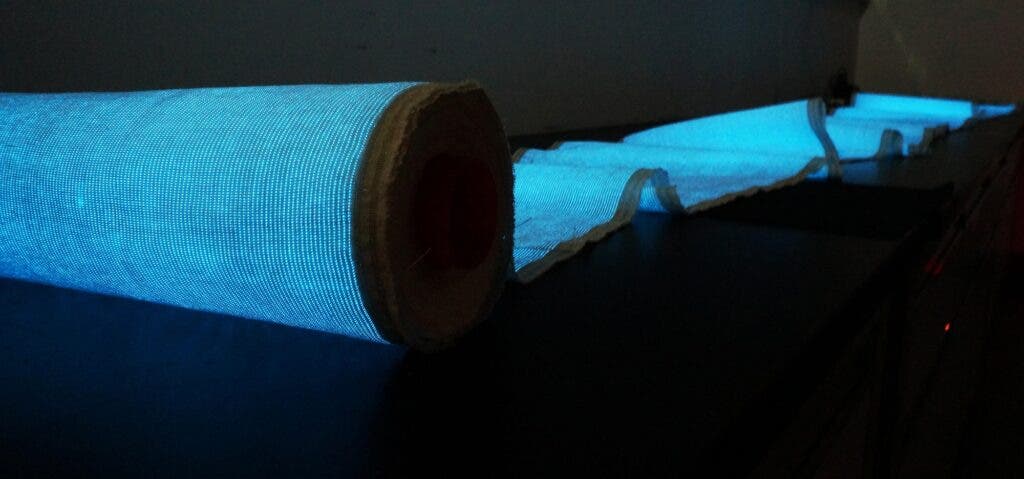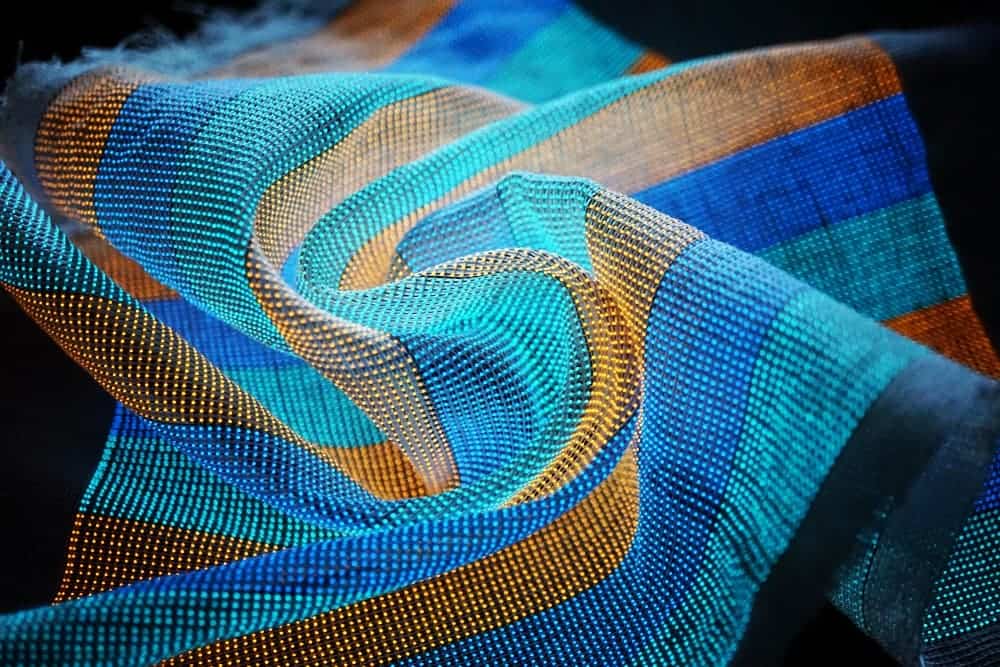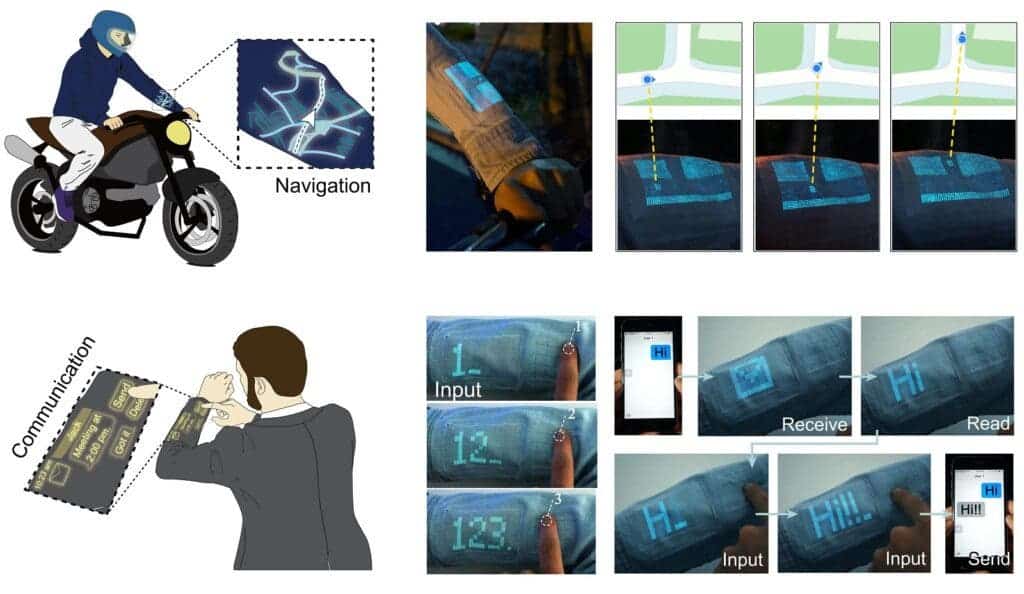
Smartwatches and wristbands have come a long way, but what if you could integrate electronic displays directly into clothing? Researchers in China explored this concept in a new study where they described electronic textiles that can be turned into flexible, breathable, and durable displays.
The ultimate wearable electronics: your clothes
Weaving solid-state display materials into clothing is not only cumbersome and clunky, it’s just impractical. Although there are paper-thin, flexible micro-LED displays out there, they simply can’t withstand the kind of deformation that is expected when fabrics are worn and washed.
Huisheng Peng and colleagues at Fudan University in Shanghai, China, looked at this problem and thought of an obvious solution: just turn the clothing’s textiles into electronic displays.
To this aim, the researchers produced a prototype of a display fabric measuring 6 meters in length and 25 centimeters in width. The display fabric can be integrated with another layer of touch-sensitive fabric for the user interface, as well as a fabric power supply. In this case, the power is harvested from solar energy.

But first, Peng’s team had to overcome a number of technical challenges. To produce illumination, the researchers weaved conductive weft and luminescent warp fibers while being careful to have a stable interface between these two fiber electrodes with an additional transparent and elastic composite fiber.
Another problem is that the thin active layer needs to be coated uniformly, a challenge that was surmounted with the help of scraping micro-pinholes. “We had thus achieved a continuous and large-scale production of such display textiles,” Peng said.
“Integrating displays into textiles offers exciting opportunities for smart electronic textiles – the ultimate form of wearables poised to change the way we interact with electronic devices, but thin-film displays could not meet the application requirements,” Peng told ZME Science.
“Display textiles thus become necessary to serve to bridge human-machine interactions, offering, for instance, a real-time communication tool for individuals with voice or speech disorders,” the researcher added.
During tests, the researchers demonstrated various applications, such as turning the fabric into a navigation tool that displays an interactive map or as a smartwatch-like tool that sends or displays messages via a Bluetooth connection with a smartphone.
After 1,000 cycles of bending, stretching, and pressing, the electroluminescent units remained stable suggesting that the display fabric could perform well in a real-life use case when constant deformation is expected.

This is why Peng is confident that these fabrics can come to market soon. He already has opened collaborations with some companies involved in the auto, wearable electronics, and smart clothing industries. “I think the display textiles can be widely used for real applications in this year,” the researcher told me in an email.
Next, the researchers plan to scale up the resolution of their display textile and the intensity of the illumination, while keeping costs low.
“As a new technology in displaying, they may change the way we live in many directions,” Peng concluded.









